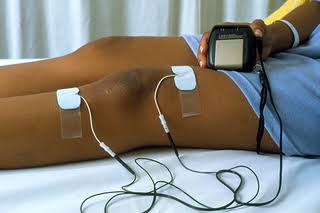
Plantar fasciitis is an inflammation of the thick band of fascial tissue that connects the heel bone to the toes on the sole (plantar aspect) of the foot. Here are my 5 top tips for plantar fasciitis pain.
1. Rest – Ease off the running and switch to swimming or a low impact exercise to rest the feet. –
2. Ice – Applying ice to the sole of the foot at the end of the day will help ease the inflammation. Keep a bottle of water in the freezer for rolling on the bottom of the foot.
3. Footwear – Put away the high heels and switch to comfortable flats. Orthotic supports from a podiatrist or heel pads inside shoes can also help ease the pain. Support your arch and cushion your heel with properly fitted shoes. Wearing appropriate footwear will make a big difference.
4. Stretching – Stretching the calves and hamstrings, before and after exercise or a day on your feet.
5. Foam rolling – Rolling the calf and sole of the foot over a ball or foam roller, to stretch the fascia are all good at-home treatments. Another top tips for plantar fasciitis is specific exercises such as calf raises to load and strengthen the tendons.
Who gets plantar fasciitis?
Plantar fasciitis is most common in runners particularly those who run on hard surfaces but can also occur in people who stand for long periods of time. Those who wear poor footwear, such as shoes with little cushioning or arch support. People who pronate as they stand or walk. Sudden weight gain, such as during pregnancy and those with muscular tension or poor biomechanics in the calf and Achilles tendon.

What are the symptoms?
Symptoms include a sharp “stabbing” pain in the heel on standing or walking, particularly in the morning or after long periods of sitting, a “burning” horseshoe ring of pain in the back of the heel, and tension in the bottom of the foot, Achilles tendon and the calf. These can all lead to limping while walking. The pain is likely to be worst in the morning or after a period of sitting and ease with movement or throughout the day.
A physiotherapist or podiatrist can make a diagnosis based on your symptoms. If it has been present for a long period of time (6 months or more), a bone spur may have developed and will require imaging for diagnosis.
Plantar fasciitis is considered a chronic issue and should be treated as soon as possible. The longer it goes on for, the worse it will be come and the harder it will be to treat.
What is the treatment?
Massage and dry needling or acupuncture are good non-invasive treatments. While dry needling the sensitive areas of the foot can be a daunting prospect there is good evidence it can be used as a good alternative option before proceeding to more invasive therapies of plantar fasciitis.

If the condition goes on untreated, it can lead to complications such as spurs in the heel and may require more invasive treatments such as steroid injections, shockwave therapy or surgery.
Further reading…


